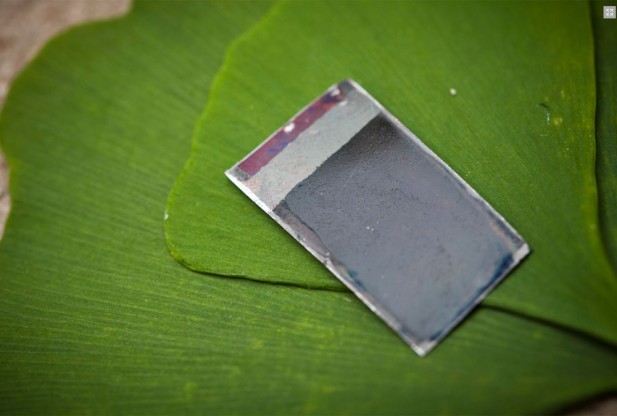MIT Cultivates Artificial Leaf
Nature may have long ago captured the power of the sun through photosynthesis, but, with the help of MIT, man is one step closer to bridging that gap.
 With the recent publishing of a new paper addressing potential design flaws of an artificial leaf, researchers are helping to bring the artificial photosynthesis one step closer to becoming a reality. The goal is to create a research program dedicated to improving the technology's efficiency to help it survive in the commercial market.
With the recent publishing of a new paper addressing potential design flaws of an artificial leaf, researchers are helping to bring the artificial photosynthesis one step closer to becoming a reality. The goal is to create a research program dedicated to improving the technology's efficiency to help it survive in the commercial market.
But this leaf's goal isn't to produce fuel in the form of carbohydrates; Instead, the system would use sunlight to generate and store hydrogen. Then, the fuel can be used on demand, allowing solar energy to be useful even when it's dark out.
The technology works by combining a standard silicon solar cell and chemical catalysts to split surrounding water molecules into hydrogen and oxygen. Not only does this improve upon existing solar technology, it is also a self-contained system that, once commercialized, could provide electricity to billions of people throughout the developing world.
Since the leaf's initial demonstration in 2011, the efficiency has improved from being able to convert only 4.7 percent of sunlight to fuel to 16 percent or more as of the current analysis.
According to the team, the key to boosting solar-to-fuel efficiency lies in finding the ideal combination between solar cells and catalyst – a problem that a detailed road map is well-suited to solve. By following MIT's proposed trajectory, researchers can test and optimize each component of the leaf before they are integrated to the system at large.
Key weak points that future research must address include increasing voltage from the silicon solar cells and lowering resistance within the water so that electrons can more easily complete a circuit.
A standard cell produces only 0.7 volts, however 1.2 are needed to power the water-splitting reaction. The current solution under investigation involves pairing multiple cells in a series, which results in some voltage lost at the junction between cells, but is promising nonetheless.
To improve efficiency within the water-based circuit, a current proposal is to minimize the distance that ions have to travel by using interleaved plates.
The researchers have also developed through various simulations a framework to determine the efficiency limits of the system. The hope is that this will lead researchers to pursue new systems that better meet – or possibly even exceed – those limits.
Full story at MIT










